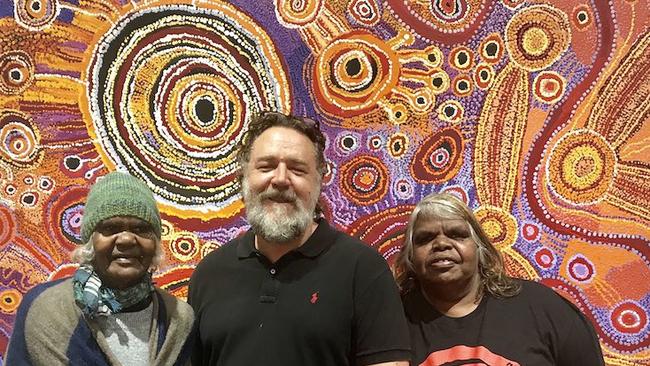Minister vows to flush out bogus art
In an effort to stamp out fake art, Indigenous communities and artists in every state and territory will be asked for their views on the industry under a new plan from the government.

Indigenous communities and artists in every state and territory will be asked for their views on the Aboriginal art industry as Arts Minister Tony Burke contemplates legislation to stamp out fakes.
The Albanese government is moving to protect First Nations artists and businesses from the scourge of fake Indigenous art with new laws. It will begin consultations on the design of the laws within weeks.
The government is attempting to address scams involving paintings but also items that are being passed off as genuine, such as boomerangs, ties and T-shirts sold at souvenir stalls and shops.
A Productivity Commission report in 2022 revealed more than half of all purchased merchandise and souvenirs with First Nations art and designs are fake or are made without permission.
Public engagement sessions will take place over 10 weeks at 38 locations across Australia. Three additional online sessions will be held in June. The legislation will be written in partnership between the government and an Indigenous working group.
“What we’re talking about here is theft, and it has to stop. That’s what these laws will do,” Mr Burke said. “Fake Indigenous art means artists get ripped off, consumers get ripped off and businesses get ripped off.
“It’s important that we get this right, which means listening to the communities impacted.”
The Weekend Australian can also reveal the Office of the Registrar for Indigenous Corporations (ORIC) has sought information from a South Australian government-led investigation about alleged wrongdoing in APY Arts Centre Collective.
The state-appointed panel interviewed more than 200 people from the Indigenous arts sector and looked into alleged malpractice at the APYACC, including allegations of fraud, bullying and claims that white staff painted on Indigenous canvases.
The panel found cause for concern in every area it was tasked to investigate. It followed on from a long-running investigation by The Australian, which first raised these allegations.
The panel wrote in December to the Australian Competition & Consumer Commission and to ORIC, both of which have the power to investigate and litigate.
Early last month, the arts ministers of South Australia and the Northern Territory expressed their exasperation that while the ACCC had sought information about the alleged wrong doing, ORIC, the Indigenous corporation’s watchdog, had not.
The Weekend Australian understands that this week ORIC contacted the panel, seeking further information and that the panel will send it “the primary evidence”, which comprises largely of recorded interviews with the 200 people, including dozens of Indigenous artists.
Previously, the peak bodies representing Indigenous artists and arts centres have stated that any review into “fake art” needed to address the issue of white staff painting on Indigenous canvases.
Philip Watkins, the chief executive of Desart, which represents thousands of artists from the central deserts, said last year that he was “very disturbed” about the alleged practice of white staffers painting on Indigenous works and that this was a matter that clearly needed to be addressed.
“In my view it (white staffers painting on Indigenous canvases) goes way beyond what would be considered acceptable practice for non-Indigenous studio people to be doing,” Mr Watkins said.
“That is an aberration. It is not common practice.”



To join the conversation, please log in. Don't have an account? Register
Join the conversation, you are commenting as Logout